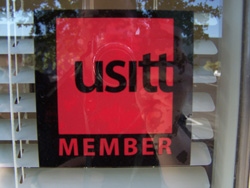News From Lea Asbell-Swanger, USITT President
What Does It Mean to Be a Member?
 What does it mean to be a member? More specifically what does it mean to be a member of USITT? I admit that I started thinking about the meaning of membership after seeing a draft of our Executive Director’s message for this issue of Sightlines. While he and I have not heretofore shared a theme, at least not intentionally, this particular topic seemed large enough to survive a treatment by both of us.
What does it mean to be a member? More specifically what does it mean to be a member of USITT? I admit that I started thinking about the meaning of membership after seeing a draft of our Executive Director’s message for this issue of Sightlines. While he and I have not heretofore shared a theme, at least not intentionally, this particular topic seemed large enough to survive a treatment by both of us.
Membership is simply, and somewhat annoyingly, defined as “the state of being a member,” which sent me in search of clarification on the meaning of “member.” According to the American Heritage Dictionary, a member is “a distinct part of a whole.” If the “whole” is an organization, the definition expands to “a person who belongs to a group or organization.” It’s mildly interesting to note that other “wholes” include everything from mathematic sets to the bodies of humans, animals, and plants, but I digress.
As I thought about this definition with respect to USITT, I focused on two things: the sense of belonging and being a distinct part. At first these concepts seemed in conflict. How does one “belong” to anything and still remain unique? Of course, I had hardly formed the question in my mind when I realized that the membership of USITT embodies that idea better than most. While we are united by our association with design, production, and technology within the performing arts and entertainment industry, we each still have the opportunity to tailor our membership experience in a very personal way. That means that each of the 3,650 to 3,750 members referenced in David Grindle’s article may participate in whatever manner they choose. This is good -- and bad.
The good is represented by those members who avail themselves of all the benefits offered – training and education, networking to solve problems or find jobs, professional development through volunteer service, access to international exposure and association, financial support for research and development, etc. The list of possibilities is long and varied, and the means have often been created by members themselves, and then formalized as part of what USITT offers to other existing or future members. This process is a perfect representation of what a professional association is supposed to be: a group of individuals who voluntarily enter into an agreement to further a particular profession, the interests of individuals engaged in that profession, and the public interest. The key to the success of this type of member is the active participation and contribution each one makes to his/her individual experience, which in turn, provides benefits to the organization and ultimately the profession. In other words, members get more out of it because they put more into it.
The member who joins and then waits for benefits to be thrust upon him/her certainly has opportunities, but like the student who only attempts to meet the minimum requirement of a class, he/she should not expect a maximum return. The point is, a member’s investment has to be more than the price of that membership if he/she intends to reap the highest benefit.
Part of the reason that USITT has not had to raise the membership rates repeatedly is because it has always, and proudly, relied on the willingness of dues-paying members to invest personal time and sometimes additional money in order to continue or expand the work of the association.
Yes, sometimes it’s hard to find personal time and/or extra funds in a world where employers are requiring employees to do more with less and the cost of everything is on the rise. But the alternative is to decrease the collective voice with which we speak about our profession both to those employers and the public.
Yes, relying on volunteers means that the processes and responsiveness of systems will not be consistent and things will slip through cracks when the “real job” demands priority. But part of making the volunteer commitment is to first be realistic about what is personally possible and asking for help when needed. For me, this is a significant key to the expansion of the invested members. Those who are already actively engaged have a huge responsibility to invite the personal commitment to action of the minimal member, who sometimes is afraid to offer to invest for fear of having to do it all alone.
As the new year begins, I encourage each of you to consider which kind of member you want to be, but do so in conversation with colleagues. If they are already members, the discussion may encourage a higher level of investment in USITT. If they are not members, the discussion may tempt them to consider an investment in USITT and in themselves.


We'd like to hear your comments on this story.
Please e-mail Lea at Lea.Asbell-Swanger@usitt.org.